In the animations of Nathalie Djurberg and Hans Berg, animals become human and humans become animals. Literally.
Wolves and crocodiles wearing leather jackets casually smoking cigarettes, women exchanging intimacies with frogs and tigers. “Sex is something that all people and animals have in common,” artist Nathalie Djurberg recently commented in an interview. “It is one of our most fundamental needs and instincts.” In her collaborative works she explores this connection with musician Hans Berg.
Desire and seduction not only motivate lustful encounters in human and nonhuman organisms, but also set off their fusion, their mutual incorporation.
Maybe we are all fucked up
“Well. I woldent say she’s completely fuckt up,” ponders a wolf drawn in charcoal. The wolf is the protagonist of “Untitled (Vargen)” (2003), one of the first films Nathalie Djurberg made. And he talks to us, as if we were unwelcome visitors: “My English bathers you? What abaot the way she animated mi arm?” The reference is to Djurberg herself. And it marks the start of films featuring animals with unappealing – and often all too human – characteristics by the Swedish artist duo. In “Dark Side of the Moon” (2017), for example, a pot-bellied pig struggles with the urge to reveal a possibly disgraceful secret, while in “One Need Not Be a House, The Brain Has Corridors” (2018) a shady crocodile with a gold tooth and leather boots is brought to its knees by a canine gangster decked in gold.
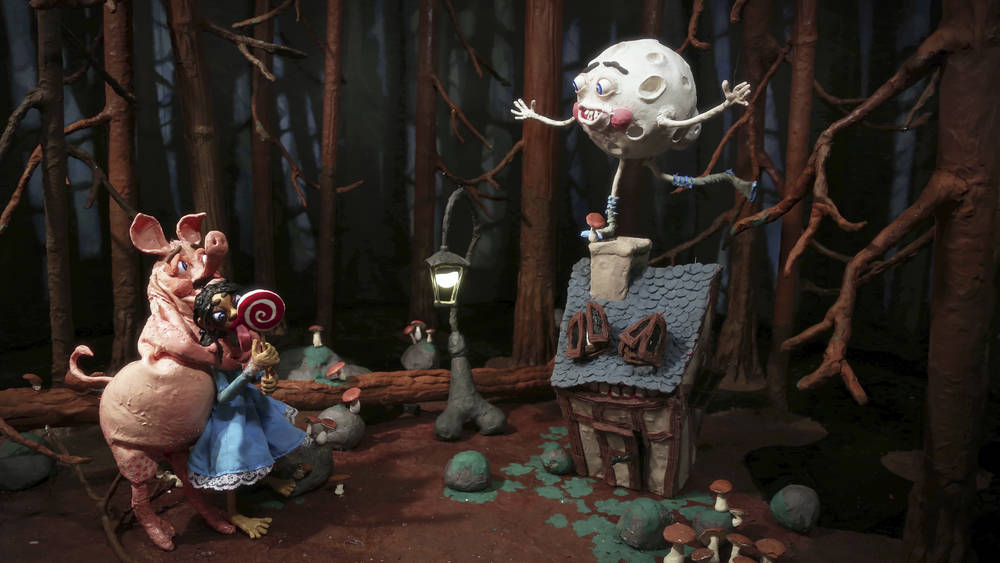
Shortly afterwards, the crocodile fumbles with the backside of a female pig clad in skimpy briefs. “I want to conquer.” Here the desire is to conquer – and to be conquered. With one leg on the side of the bed, a woman dries off her naked body with a towel. As soon as the snout of the tiger lurking behind her moves closer she thrusts her behind towards him, offers him her body. Finally, she slips under the white, lacy cover with him. “Why do I have this urge to do these things over and over again?” the protagonist asks in the animation, which consistently carries the title “Tiger Licking Girl’s Butt.”
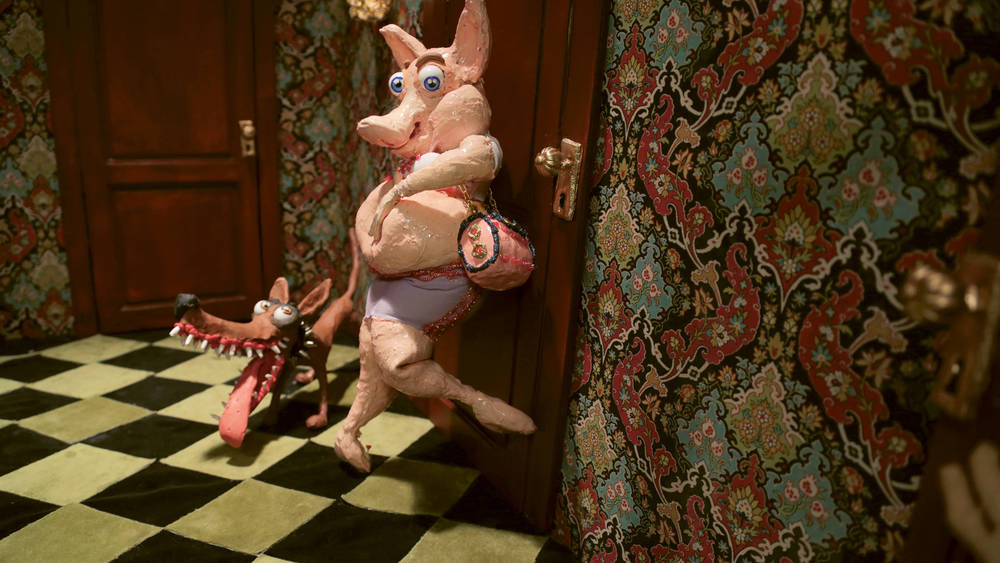
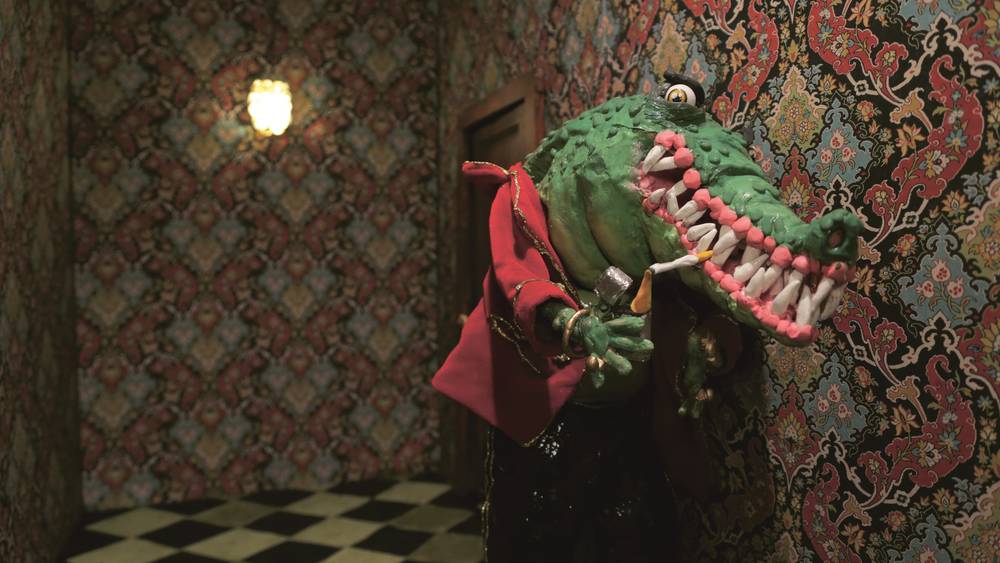
In “Untitled (Acid)” from 2010, a (likewise naked) woman licks the back of a (presumably hallucinogenic) frog. And the frog licks back. Accompanied by psychedelic drumming, she draws the small green body across her skin, has the frog feel and lick her and crawl over her genitals. Repeatedly, the film draws our attention to voluminous buttocks, the tiger’s tail quivering in anticipation, the frog’s fleshy tongue.
The way Djurberg depicts bodies – with small heads, long limbs, pronounced behinds, breasts and stomachs – recalls Michail Bachtin’s concept of grotesque realism. The latter often shows bodies strangely disproportioned, swollen, too small or incomplete. Orifices such as mouth, nostrils or anus are emphasized, and the lower regions of stomach, legs, feet, buttocks and genitals appear to dominate over the upper ones. In other words, the body is no longer controlled by mind and reason, but rather by needs and drives. The result is a sensual break with clear-cut holism.
Why do I have this urge to do these things over and over again?
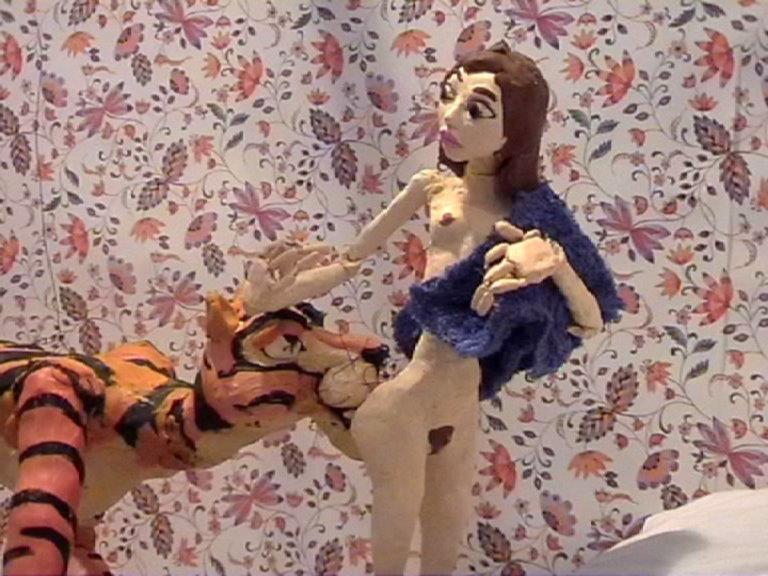
Djurberg’s and Berg’s films take this break one step further when they show how bodies open up for each other, fuse to create amorphous forms, take possession of each other or multiply as they disintegrate. The (naked) female body is typically at the center of the process. In “Putting Down The Prey” (2008), a huntress harpoons and skins a walrus and after removing the bowels slips into the still-warm body.
Bodies join together and multiply in decay
“The walrus becomes the prey of a post-human project to become a walrus,” writes Patricia McCormick in the catalog accompanying the exhibition. In “Turn into me” (2008) by contrast, the human body of a woman is transformed by being occupied by the animal world. After a naked woman falls to the ground in a forest, we observe her deterioration in a form of slow motion. Maggots bury into her flesh and ooze out of her body. Finally, a mole and a racoon set up home in the skeleton and have it transported through the forest still draped with some human remains.
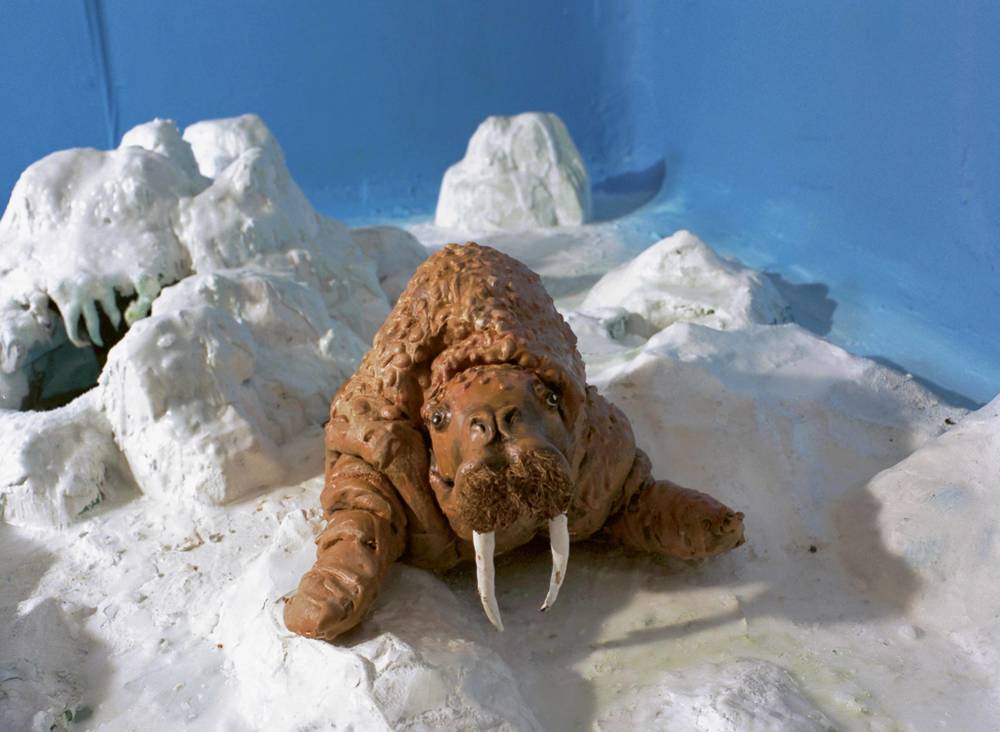
“Snake With a Mouth Sewn Shut, or, This is a Celebration” was just developed last year. Here a woman observes the constant transformation of her body with horror, which seems to be possessed by a snake-like demon. “I tried to keep it in, I pushed it down.” But it makes no difference. The snake does not allow its mouth to be sewn shut. She grows scales, a snake comes out of her rear, her saurian body disintegrates into a skeleton. These consumptive metamorphoses are observed by a baby that is sometimes a human, other times a Disney rabbit in a romper suit.
Everything and everyone struggles with material and physical temptations
The animal figures in Djurberg’s and Berg’s works don’t have a purely allegorical function. You can perhaps grasp them as equal inhabitants of a world in which the pursuit of domination has to be negotiated with the desire for subjection, in which everything and everyone struggles with material and physical temptations. A world in which bodies are simply bodies: imperfect, malleable, dirty, transitory. “Well. I woldent say she’s completely fuckt up,” says the wolf. “Mayby you are the fuckt up one.” Perhaps this is the case for all of us. Literally.









